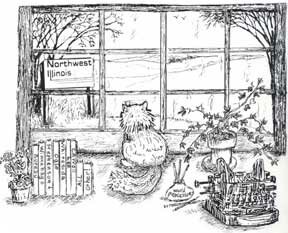
Discover rewarding casino experiences. 

Please Don't Quote Me Cabbage by any other name is kale, kohlrabi, broccoli, Brussel sprouts, collards, charlock, Jersey kale, cauliflower, and so forth. Yes, those all too familiar vegetables are identified commercially as cabbages besides the hard and soft headed varieties we easily recognize.ot and trading place in and out as a port. Then the method of powering boats changed from wood and the way of transportation with it. |
Nearly every neighborhood during the 1920s when Prohibition loomed over the nation (1919-1933) had a “still,” a distillery that turned corn, grain or sugar into alcohol and in some places as neighborhoods do yet have stills ... To beat taxes and to make a bit of spending money. The output was known variously as booze, hootch, rotgut, poskull, moonshine, the names indicating the quality of the production. We have already done an article about the “still” at Lanark in 1935-’36. It was one that brought some of the most comment. Copies were requested. That “still” was on the very north edge of town in a large barn from which a tunnel was dug for an escape route and a “pipeline” to carry the used “mash” out into Straddle Creek ... Even during the winter. It took conservation officers and the legal arms to find out why the fish were dying. They blamed Fuhreman’s Canning Co. for dumping effluence into the old stream which was very famous for the size of fish caught there. It long was a tradition to catch the Big One in Straddle Creek. Even after the bureaucracy made the canning factory put in a septic system (they canned sweet corn and peas) the kills didn’t stop. There was a clear demarcation line where the fish could be seen lying dead on the banks. The operation finally went awry when too much mash was dumped into Straddle Creek and too many fish corpses were left behind. The earlier articles are entitled PDQ Me “The Year the Fish Died,” 6/15/1988; and “The Day the Still Was Raided,” 6/22/1988. It would be too much pride of place to say that “bootleggers” were from out-of-town, not locals but that would be going too far. Some were from around the neighborhood but many were from “the City.” The question has been, didn’t anyone wonder why those large, lumbering, heavily laden trucks went in and out so often. We weren’t the hayseedish rubes they thought us, don’t ya’ know. It was usual to set up a still in the quiet countryside where there was little traffic and in the case of the barn north of Town, a nice slope to the creek from the outbuildings, also lased by the big city dudes. There were fewer people to nose in though most everyone here was aware of the high traffic going in and out. Locals might not have been motivated to build a still because someone was bound to snitch but likely most people knew what was happening. After all, the dailies, weeklies, radio and newsreels at the movies were chock full of articles about gangsters, the Federal revenuers, bootleggers, and such. (Bootleggers, by the way, was the guy who pulled a bottle out of his boot for a thirsty customer.) Wrong-doers were the celebs of the times, their names and faces recognizable by all.
One item from a newspaper of December of 1927 when a Judge Clarence Ely was being given credit for fining a Clinton woman $700 and $75 for attorney fees for having an excessive amount of liquor at her residence. During the campaign when Ely was running for office he was blamed by his opponents for having been hired as a lawyer by known law-breakers and men of questionable repute. He’d vowed not to be influenced by that crowd and to show his sincerity fined the woman a prodigious amount of money for the times ... The woman pleaded guilt to “maintaining a public liquor nuisance” and since it was her first offense, no time served. She was probably known to the neighborhood as purveyor of spirits like the fellow ‘way back eighty some years ago who stood on a Lanark street corner in a heavy overcoat, winter or summer, from which he’d draw endless supplies of booze from specially sewn pockets. Customer only had to drive by, money in hand and he’d pass a bottle with a deft hand. Every town had something of the sort. Who the supplier was is not known. Much more sophisticated was a still about five miles north of Sabula, Iowa “west of the Sabula/Green Island road.” Would this be Rt. 52 presently? This occurred in July, 1931. A hundred twenty-five gallons of alcohol and 22,000 gallons of mash were found. Notice of the raid is part of a display at the Jackson County/Maquoketa Historical Museum. It is unique among exhibits because it chronicles illegal activity that most want to keep hidden. Those folks did a nice job putting history right out there. Like many other stills of the Prohibition days the one north of Sabula was in a very remote place; back off the more well-traveled road, long lane, rough country, sparsely settled and a cluster of abandoned buildings known as the “Eaton Farm.” The crew of liquor makers had been there, perhaps, six months. The Feds led the raid of nine men from federal, state, and county departments. This operation used sugar, not corn or grain. The sugar was how the state agents learned about the operation ... They watched sale of large amounts of sugar, this from Cedar Rapids that went to Clinton, Iowa by truck. It then traveled from there through Goose Lake, Preston to the “Eaton Farm.” Three men at the site were arrested, one from Rock Island, two from Kewanee. A .22 revolver was in their possession. It was suggested that an airplane was used in the operation. Farmers had seen planes several times descend behind the trees and not come back up for awhile. A trail was followed into the woods until agents came upon a broad, sloping hill on which the small airships of the time could easily land. Most modern. The curious and the snoops had been warned off the property for several months so “something was up.” The basement floor had been cemented and, as well, there were a couple cement vats built there in which to let the “mash” percolate. It was estimated that within a period of two weeks some 2,431 gallons of hootch could have been sent out by regular truck. The equipment was valued at $6,000.00, not to shabby an amount those days. An inventory of the seizure was given in the newspapers and is listed here for your edification. Pictures with this were taken at the Jackson County Museum and for which we are grateful. Next week will be another headline story from Lanark’s neighbor to the north, in Stephenson County in 1929. It was the biggest raid in that county.
Inventory, June 23, 1931: 2 copper cookers; 1 copper column; 3 condensers; 1 steam boiler with 24 hp. motor; 3 steam pumps; 3 storage tanks; 1 wash tub; 3 pails; 1 smoke stack; 6 sacks cement; 2 sacks lime; 3 sacks salt; 82 ft. galvanized spouting; 50 empty 5 gallon cans; 445 empty 1 gallon cans; 150 assorted pipe and fittings; 300’ garden hose; 3 tons of coke (fuel); assorted tools and at the well 1-2 cylinder , 12¼ hp. 1 cyl. nerengine; 2 pump jacks; 900 empty sugar sacks; 50 gallon drum of gasoline and ½ ton Ford Tribloe chain block.
|





